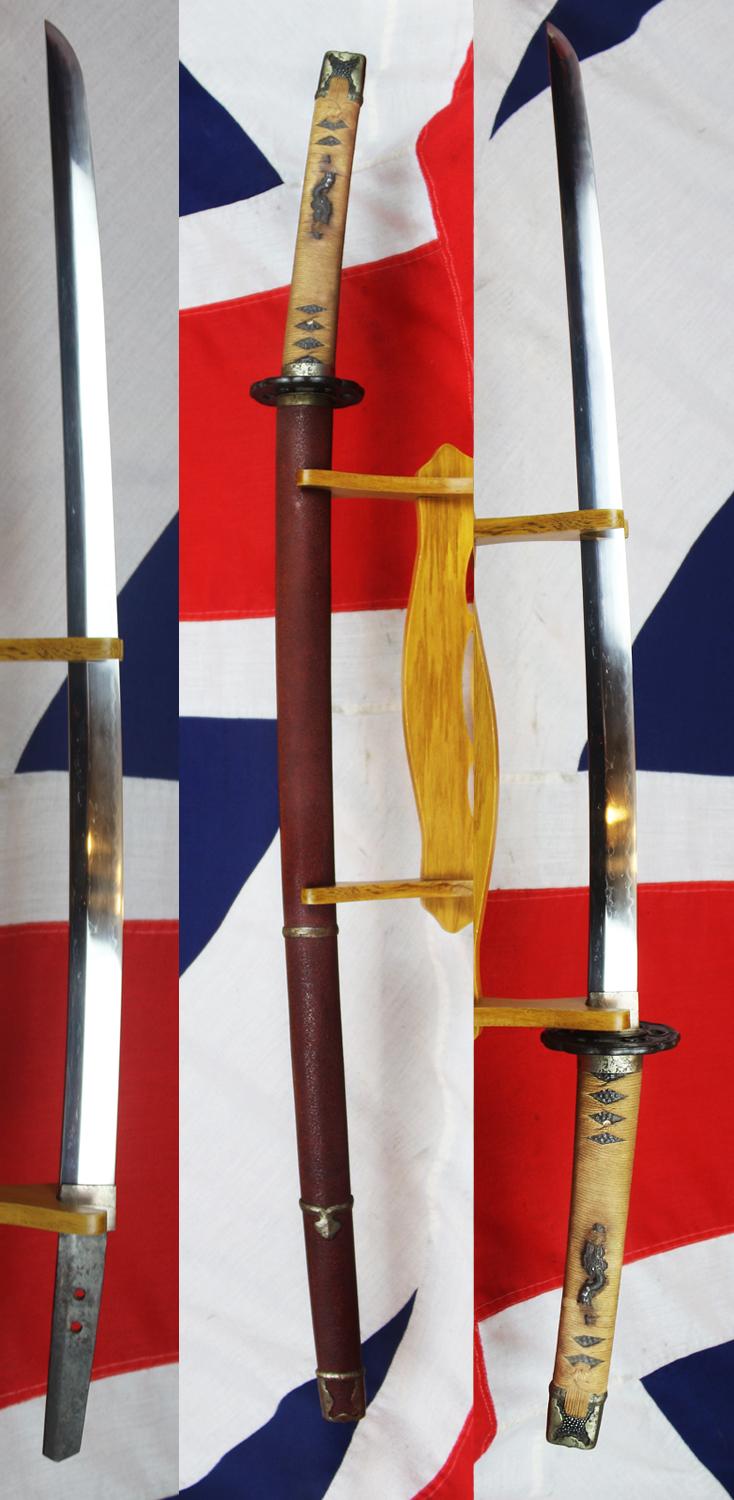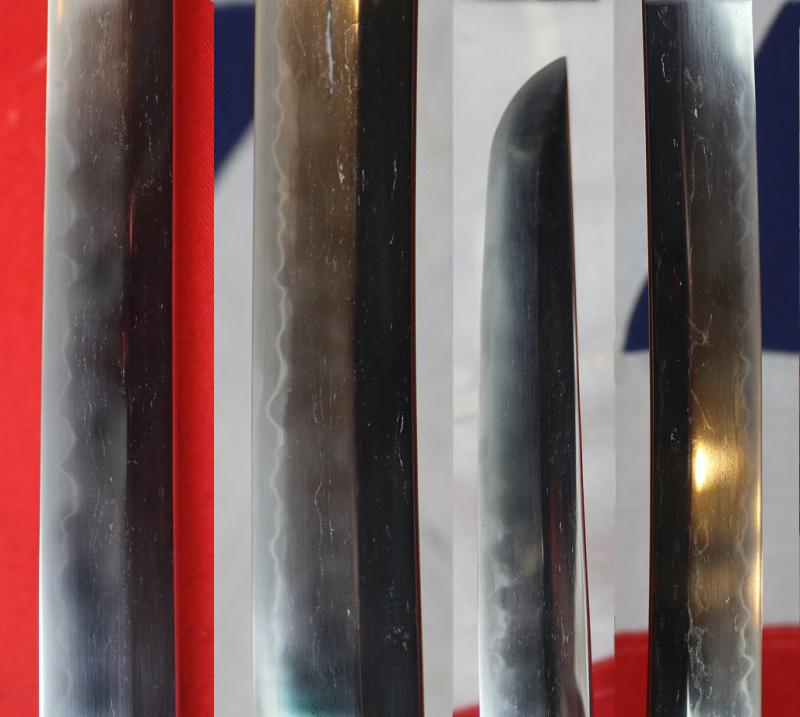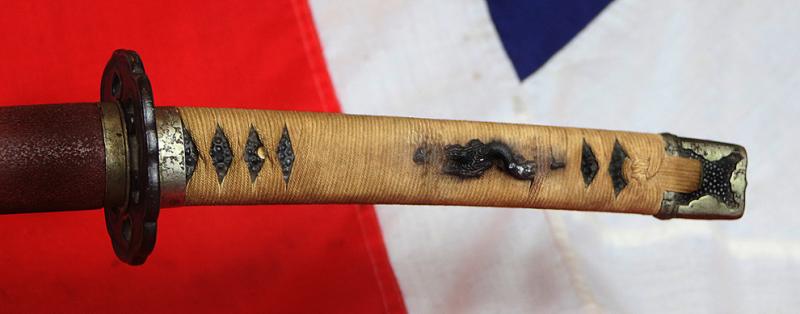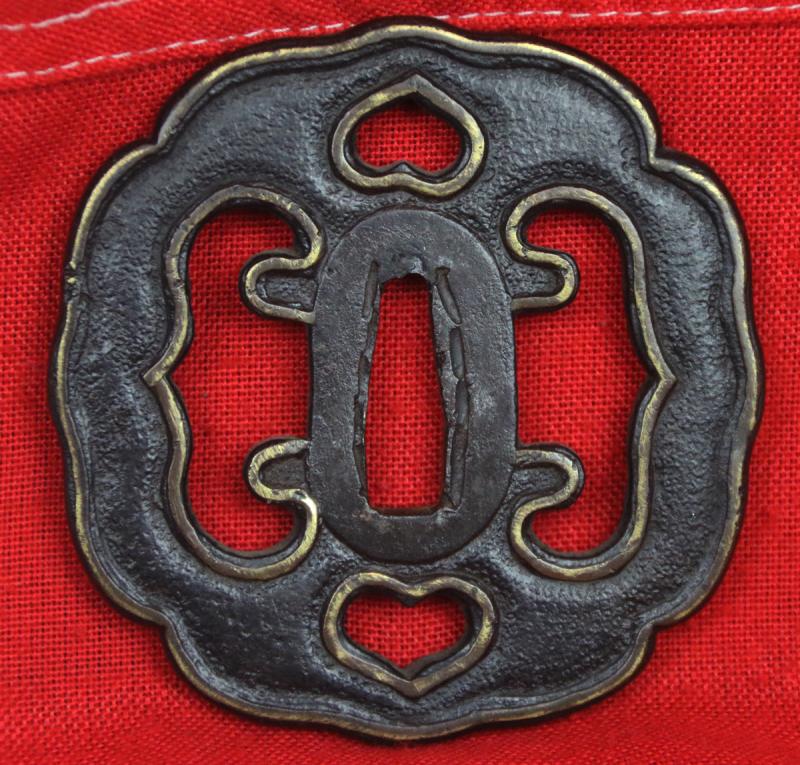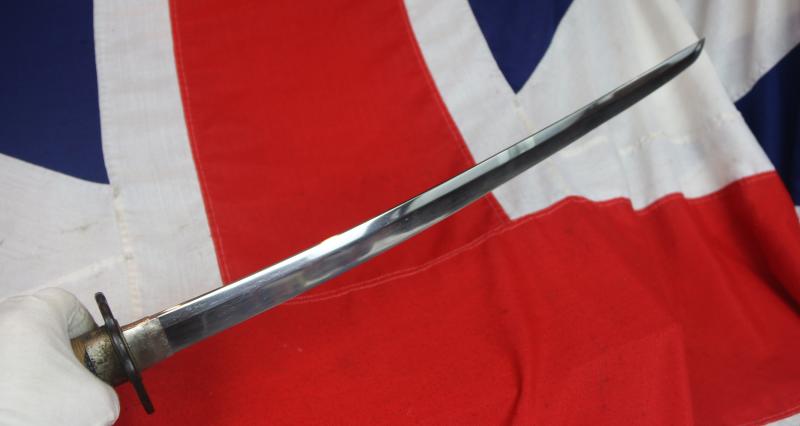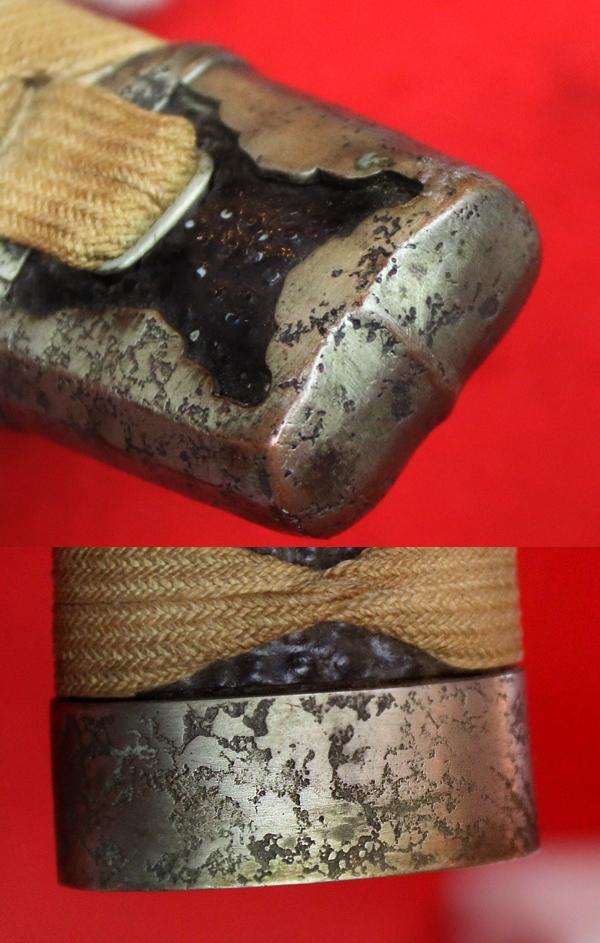An Ancient Koto Period Samurai Sword, Almost 600 Years old, From The Sengoku Jidai. A Handachi Mounted Katana, With Beautiful Deep Red Ishime Urushi Lacquer Saya, & Hammered Silver Onlaid Mounts
From the Muramachi and Sengoku period. The blade was made almost 600 years ago, in or around 1450, and it is fully mounted in a fine suite of Edo period, all matching handachi koshirae sword mounts, fitted upon the saya and tsuka, with a very scarce highly decorative hand finish, of hammered silver over copper, to represent reflections of moonlight in silvery puddles of water. A most impressive, beautiful and statuesque sword. The blade shows a most stunning and active hamon. The tsuka has its traditional Edo period battle wrap, over black samegawa {giant ray-skin}, of yellow silk-cotton ito, with two takebori iron dragon menuki.
One picture in the gallery is an antique Meiji period photograph of a seated daimyo clan lord, holding his very same, identically coloured and mounted han dachi katana.
Han-dachi mounted samurai swords originally appeared during the Muromachi period when there was a transition taking place from tachi to katana. The sword was being worn more and more edge up when on foot, but edge down on horseback as it had always been.
The Sengoku period was initiated by the Ōnin War in 1467 which collapsed the feudal system of Japan under the Ashikaga Shogunate. The Sengoku period was named by Japanese historians after the similar but otherwise unrelated Warring States period of China. The era is beautifully depicted in Akira Kurowsawa’s films called Jidaigeki. The Sengoku Period (1467-1568 CE) was a lawless century-long era characterized by rising political instability, turmoil, and warlordism in Japan. During this period, field armies and soldiers rapidly rose in number, reaching tens of thousands of warriors. Many castles in Japan were built during the Sengoku Period as regional leaders and aristocrats alike competed for power and strong regional influence to win the favours of the higher-class Japanese at the time. Kurosawa’s film depiction of Macbeth, Throne of Blood, is set in this era of Japan’s feudal period. Original title 蜘蛛巣城, Kumonosu-jō, lit. 'The Castle of Spider's Web'
This then led to the creation of a more complex system within the military, the armoured infantry known as the ashigaru. Initiated by the collapse of the country’s feudal system during the 1467 Onin War, rival warlords or daimyō, continued to struggle to gain control of Japan until its reunification under Japan’s three “Great Unifiers” –– Nagoya Nobunaga, Hideyoshi, and Ieyasu Tokugawa –– thus, bringing the war-stricken era to an end in the siege of Osaka
The handachi is a response to the need to be worn in either style. The samurai were roughly the equivalent of feudal knights. Employed by the shogun or daimyo, they were members of hereditary warrior class that followed a strict "code" that defined their clothes, armour and behaviour on the battlefield. But unlike most medieval knights, samurai warriors could read and they were well versed in Japanese art, literature and poetry.
Samurai endured for almost 700 years, from 1185 to 1867. Samurai families were considered the elite. They made up only about six percent of the population and included daimyo and the loyal soldiers who fought under them. Samurai means one who serves."
Samurai were expected to be both fierce warriors and lovers of art, a dichotomy summed up by the Japanese concepts of bu, to stop the spear, expanding into bushido (the way of life of the warrior) and bun (the artistic, intellectual and spiritual side of the samurai). Originally conceived as away of dignifying raw military power, the two concepts were synthesized in feudal Japan and later became a key feature of Japanese culture and morality.
The quintessential samurai was Miyamoto Musashi, a legendary early Edo-period swordsman who reportedly killed 60 men before his 30th birthday and was also a painting master.
We could have the tsuka rebound in suitable Japanese silk tsuka ito if required. Although, we would recommend it is left just as is, as it is a most fine ancient samurai sword and its slightly and lightly discoloured cotton-silk binding is part of its amazing character and representing its great age
40.5 inches long overall, blade 24.25 inches long
Code: 23673
7450.00 GBP

